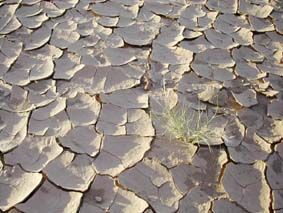The relationship between heat and soil moisture studied
For the first time, a group of scientists have assessed the global connection between soil moisture and heat waves.

For the first time, a group of scientists have assessed the global connection between soil moisture and heat waves. They have shown conclusively that precipitation deficits increase the likelihood of hot days, which may help assess heat risks in areas of the world.
The general trend is that if there is low precipitation in the spring, there is more likely to be a hot period in the summer. Water levels in the soil are essential because moist air prevents the atmosphere heating up as quickly as dry air. Water has a high specific heat capacity, meaning it takes more energy to heat it than it takes to heat dry air. Once the moisture has gone from the soil however, the temperature will rise considerably.
The study showed that this was most prevalent in the Americas, Europe, Australia, China and Japan. Not only this, but it also showed that the phenomenon has most of its impact during the most extreme temperatures. The probability of these heat waves occurring doubles in some regions after a precipitation deficits.
"We knew that in some regions soil moisture greatly affected the number of hot days, because we had shown this in other studies; for example, in southern Europe. However, we did not expect this to be the case in so many regions," says Sonia Seneviratne, who co-authored the study at ETH Zurich.
There are exceptions to this trend however, with the author citing the Swiss summer of 2011, where a dry spring was followed by a wet July and cool August. The increase likelihood of heat waves is a probability calculation, not a weather forecast, so whilst meteorologists can use this information to improve forecasts, on its own, it can only show a probability of heat waves increasing.
The next step for the researchers is to examine whether current models reproduce these trends and improve them as a result.
